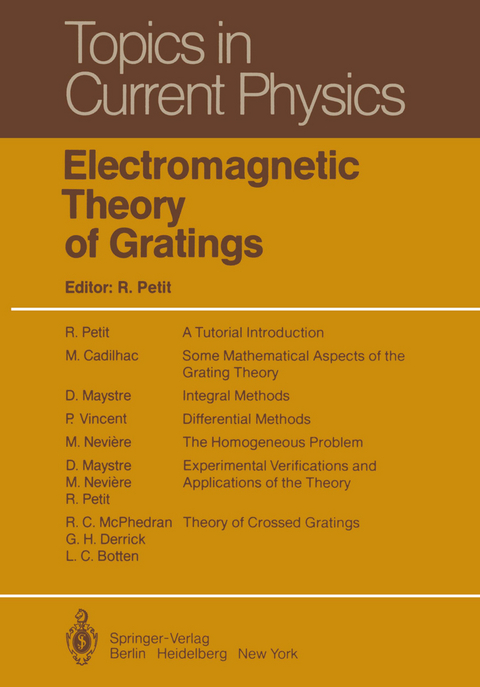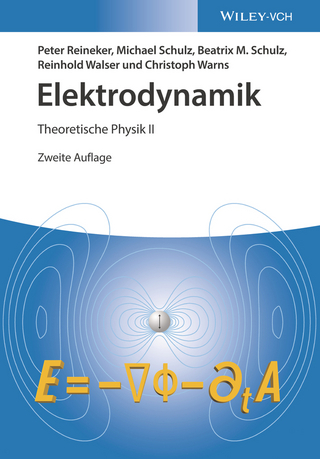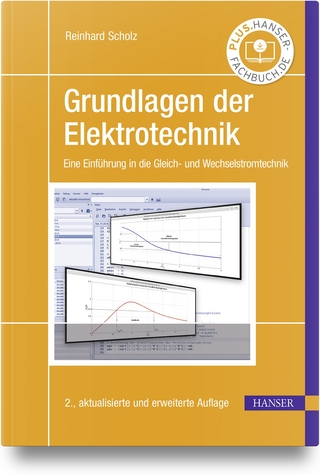
Electromagnetic Theory of Gratings
Springer Berlin (Verlag)
978-3-642-81502-7 (ISBN)
1. A Tutorial Introduction..- 1.1 Preliminaries.- 1.2 The Perfectly Conducting Grating.- 1.3 The Dielectric or Metallic Grating.- 1.4 Miscellaneous.- References.- Appendix A: The Distributions or Generalized Functions.- A.I Preliminaries.- A.2 The Function Space R.- A.3 The Space R1.- A.3.1 Definitions.- A.3.2 Examples of Distributions.- A.4 Derivative of a Distribution.- A.5 Expansion with Respect to the Basis ej(x) =exp [i (nK+k sine) x] = exp (i?n x).- A.5.1 Theorem.- A. 5.2 Proof.- A.5.3 Application to R.- A.6 Convolution.- A.6.1 Memoranda on the Product of Convolution in D'1.- A.6.2 Convolution in R1.- 2. Some Mathematical Aspects of the Grating Theory.- 2.1 Some Classical Properties of the Helmholtz Equation.- 2.2 The Radiation Condition for the Grating Problem.- 2.3 A Lemma.- 2.4 Uniqueness Theorems.- 2.5 Reciprocity Relations.- 2.6 Foundation of the Yasuura Improved Point-Matching Method.- References.- 3. Integral Methods.- 3.1 Development of the Integral Method.- 3.2 Presentation of the Problem and Intuitive Description of an Integral Approach.- 3.3 Notations, Mathematical Problem and Fundamental Formulae.- 3.4 The Uncoated Perfectly Conducting Grating.- 3.5 The Uncoated Dielectric or Metallic Grating.- 3.6 The Multiprofile Grating.- 3.7 The Grating in Conical Diffraction Mounting.- 3.8 Numerical Application.- References.- 4. Differential Methods.- 4.1 Introductory Remarks.- 4.2 The E,, Case.- 4.3 The H Case.- 4.4 The General Case (Conical Diffraction Case).- 4.5 Stratified Media.- 4.6 Infinitely Conducting Gratings: the Conformai Mapping Method.- References.- 5. The Homogeneous Problem.- 5.1 Historical Summary.- 5.2 Plasmon Anomalies of a Metallic Grating.- 5.3 Anomalies of Dielectric Coated Reflection Gratings Used in TE Polarization.- 5.4Extension of the Theory.- 5.5 Theory of the Grating Coupler.- References.- 6. Experimental Verifications and Applications of the Theory.- 6.1 Experimental Checking of Theoretical Results.- 6.2 Systematic Study of the Efficiency of Perfectly Conducting Gratings.- 6.3 Finite Conductivity Gratings.- 6.4 Some Particular Applications.- Concluding Remarks.- References.- 7. Theory of Crossed Gratings.- 7.1 Overview.- 7.2 The Bigrating Equation and Rayleigh Expansions.- 7.3 Inducti ve Gri ds.- 7.4 Capacitive and Other Grid Geometries.- 7.5 Spatially Separated Grids or Gratings.- 7.6 Finitely Conducting Bigratings.- References.- Additional References with Titles.
| Erscheint lt. Verlag | 25.12.2011 |
|---|---|
| Reihe/Serie | Topics in Current Physics |
| Co-Autor | L.C. Botten, M. Cadilhac, G.H. Derrick, D. Maystre, R.C. McPhedran, M. Neviere, R. Petit, P. Vincent |
| Zusatzinfo | XVI, 286 p. |
| Verlagsort | Berlin |
| Sprache | englisch |
| Maße | 170 x 244 mm |
| Gewicht | 527 g |
| Themenwelt | Naturwissenschaften ► Physik / Astronomie ► Elektrodynamik |
| Naturwissenschaften ► Physik / Astronomie ► Optik | |
| Schlagworte | diffraction • Dispersion • Electromagnetic • electromagnetism • Energy • Gitter (Optik) • Optics • Wave |
| ISBN-10 | 3-642-81502-2 / 3642815022 |
| ISBN-13 | 978-3-642-81502-7 / 9783642815027 |
| Zustand | Neuware |
| Informationen gemäß Produktsicherheitsverordnung (GPSR) | |
| Haben Sie eine Frage zum Produkt? |
aus dem Bereich


